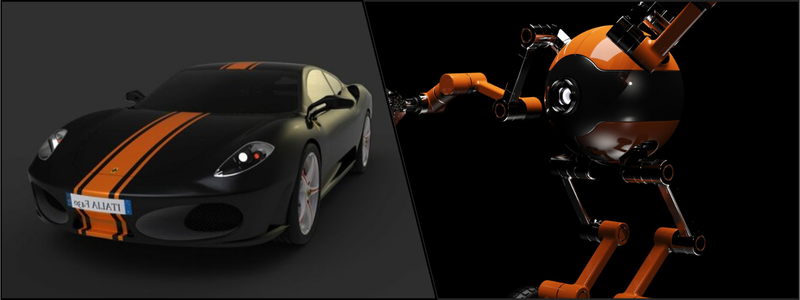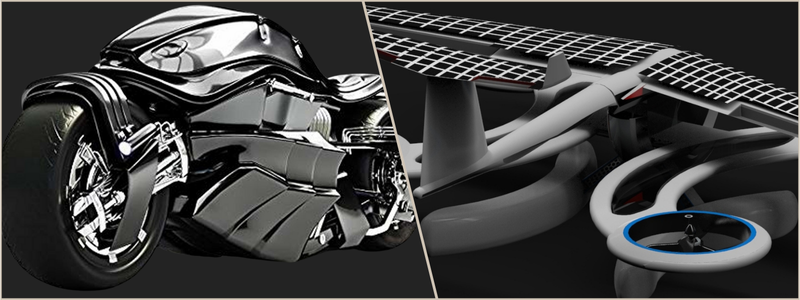Seeing that AI changed the name of the game is an understatement. This new technology has found its way into different fields, transforming them in more ways than one. Even fields such as UX and product design are feeling the AI difference, revolutionizing the process of manufacturing and delivery of products across the globe. From medical device design and development services to autonomous cars to eCommerce and home technology, AI brought about a significant shift in how products are made, developed, and distributed.
How AI trends are influencing new product design and development companies and firms
AI’s integration into design paved the way for the personalization of products, predictions based on user behavior, and automated tasks involving design. These lead to more user-centered, innovative, and efficient products. But of course, challenges and limitations including biases and data privacy must still be addressed if AI will be integrated into design processes. This article delves into how different AI trends are influencing new product design and development companies and firms.
RELATED: How the metaverse will redefine retail and shopping experiences for companies
How is artificial intelligence used in new product design and development?
Numerous industries have been using AI to streamline processes and boost overall performance. But there is still one lingering question: Can AI be used for new product design and development? The simple and obvious answer is yes. AI in all its forms can assist design systems to learn from different variables. This ability makes it a critical tool for new product design and development firms.
Product designers and developers can use these AI systems to consider not just the product’s experiences in a particular environment but also the dynamic adjustments the product will undergo in response to varying user preferences or conditions throughout its development process.
The newest trends in product design and development highlight the combination of creative exploration and technological innovation. These trends are bound to reshape the way design is approached across numerous fields. Take a look at some of the emerging AI trends and their influence on designing and developing new products:
RELATED: Smart manufacturing using CAD design is the future for OEM’s

AI’s influence on design collaboration
AI is now causing ripples of change in design collaboration. Design tools powered by AI allow seamless and convenient collaboration among design professionals, no matter where they are in the world. These tools use the power of machine learning to understand the style of every product designer and recommend complementary ideas to foster a more creative and cohesive collaborative process. Most platforms also come with features like AI-driven design recommendations, automated management of various versions of design, and simultaneous design collaboration.
These capabilities help foster creative thinking, streamline project processes, and simplify teamwork. This is similar to having a portable virtual design studio that enables creativity and collaboration despite location. AI is also used to simplify project management during design collaborations, where it can offer solutions and anticipate potential problems. Ai’s integration as one of the tools for design collaboration can make teams more efficient, resulting in more innovative outcomes of designs.
AI’s influence on design education platforms
Teaching and learning design has also been transformed with the rise of AI. More and more design education platforms are now using AI to offer more personalized learning experiences. These platforms tailor the learning process to suit each individual’s learning style and speed. They also provide instant feedback, interactive lessons, and AI mentors available 24/7/365 to answer any design-related questions.
RELATED: 8 Product design trends to watch out for in the new year
Design education platforms also provide instantaneous feedback on design projects wherein they leverage AI to critique and analyze designs in the same way that human instructors would. You can think of it as something similar to having a round-the-clock personal design instructor that makes learning design more economical and accessible.
AI’s influence on UX/UI design
Solutions run by AI are also changing the approach to user experience (UX) design, with the technology becoming more ingrained in different aspects of UX design. AI solutions are transforming the design of products, app developers and programmers, and software programs, tailoring every experience to each user’s distinct preferences and needs. It’s expected that the future of UX design will be innovative, dynamic, and customized, thanks to the unique capabilities of AI. There is a growing clamor for experiences catering to individual needs and preferences. This is why interfaces, shopping experiences, and shopping are now tailored to every individual user.
RELATED: The future of wearable technology: trends impacting business & product development
AI technology also empowers designers to assess users’ inclinations and behaviors in a snap of a finger. This paves the way for more intuitive and personalized interfaces. It also improves user experience by streamlining mundane tasks and predicting user requirements to make it more enjoyable and seamless. This is as if the interface can understand your preferences and make the necessary adjustments, which only shows breakthrough changes in design methodology. Personalization is becoming increasingly critical for both brand effectiveness and customer retention.

AI and automated web design
AI-powered automated web design is one of the emerging AI trends these days. AI algorithms have become more sophisticated to construct completely functional websites using nominal input. Users simply need to input some basic preferences. From there, AI can create a full website design, complete with user interface elements, color schemes, and layout. Tools for automated web design are also constantly gaining knowledge from user interactions, which leads to more user-friendly and intuitive website designs in the long run. It is a trend that democratizes web design to make it more efficient and accessible.
RELATED: Generative design: what it is and why it’s cool
AI and ethical design
Ethical design is expected to become a vital consideration this year, and its implementation will most likely depend heavily on AI. The technology is currently used to ensure the accessibility and inclusivity of designs for all users, even people with disabilities. It encompasses AI’s use in testing designs for compatibility with color blindness, readability for dyslexic patients, and navigability for motor-impaired people.
AI also aids in analyzing the effects of AI on the mental health and well-being of users. This ensures aesthetically pleasing designs and even ethically responsible ones with positive contributions to user experience. The trend denotes a shift towards more human-centric and socially responsible design practices.
AI and immersive 3D design
The 3D design field is expected to make some major strides this year. Software and technological advancements allow designers to create gorgeous 3D visuals that enhance their designs’ realism and depth. The shift not only improves but also changes the landscape of graphic design, with designers now able to create interactive and immersive experiences.
RELATED: 5 Tips for successful product design
Virtual reality (VR) and augmented reality (AR) design experts enrich these experiences to add a new dimension to graphic design and make it more memorable and engaging for audiences. The trend also influences graphic design, wherein immersive opportunities open new possibilities for developing visually impactful AR and VR environments. It transforms traditional 2D works into fully immersive 3D experiences, making designs more accessible and interactive.
AI, simplicity, and minimalism
Simplicity and minimalism remain two of the most prominent design trends, and AI plays a major role in refining the aesthetic further. AI tools help designers create uncluttered and clean designs that focus on essential elements. The tools assist in optimizing layouts, selecting harmonious color palettes, and choosing typography that complements the ethos of minimalism. This trend is the reflection of a bigger cultural shift to clear communication and ease of use. AI helps achieve elegance and balance in design while keeping it user-friendly and functional.
RELATED: Key benefits of industrial product design – using industrial product design services
AI and motion design
Motion design by 3D animation & modeling firms, 3D architectural design, graphic design, and various other service companies. is expected to experience heavy AI influences that will lead to more interactive and dynamic visual experiences. The AI rules and algorithms can be used to develop complex and fluid animations that can offer real-time responses to user interactions. Machine learning and AI are at the forefront of the shift towards more lifelike motion designs. The two technologies not only create visually appealing designs but also embed them with intuitive responsiveness.
The trend proves how technology has become critical in the development of user-centric and sophisticated designs. The ability of AI to animate and process massive data sets also enables designers to develop more engaging and personalized motion graphics adaptable to various user behaviors. All of these help enhance users’ experiences on today’s digital platforms.
Generative AI’s next generation
AI’s potential in crafting intricate stories, composing sophisticated musical compositions, and aiding in crafting best-selling novels will also see a significant increase. Multimodal generative AI, with the ability to synchronize various inputs, including visual, text, and voice elements, can potentially alter design workflows. The technology holds the promise of providing multidimensional and inclusive creative solutions by effectively combining different types of input. With the continuous evolution of these tools, the ability to differentiate between AI-generated and authentic content will become a more valuable and in-demand skill.
RELATED: 12 Unique product design ideas
How Cad Crowd can help
Cad Crowd offers new product design and development services that harness the full power and potential of Ai and all its newest and hottest trends.
